
Join our community to see how developers are using Workik AI everyday.
Features

Automate Financial Calculations
Use AI to generate complex formulas like NPV, IRR, and nested IF statements for precise financial modelling and forecasting.

Optimize Data Lookups
Leverage AI to generate accurate VLOOKUP and INDEX-MATCH formulas, for seamless data retrieval across multiple sheets.

Simplify Data Cleaning
Easily handle tasks like text formatting with TRIM, SUBSTITUTE, and TEXTJOIN with AI for faster data preparation.

Handle Errors Seamlessly
Detect and correct errors with formulas like IFERROR and ISBLANK, ensuring smooth data processing in your spreadsheets.
How it works
Create an account using Google or your email to access Workik’s AI-powered Excel Formula Generator.
Import your data. Specify the type of formula you need and input data ranges, conditions, and references to let AI generate precise formulas tailored to your needs.
Let AI craft the formula for you. Whether it's an IF statement, VLOOKUP, or a complex array formula, AI streamlines the process for seamless calculations and precise results.
Invite your team in your workspace in Workik and collaborate together with AI on Excel formulas.
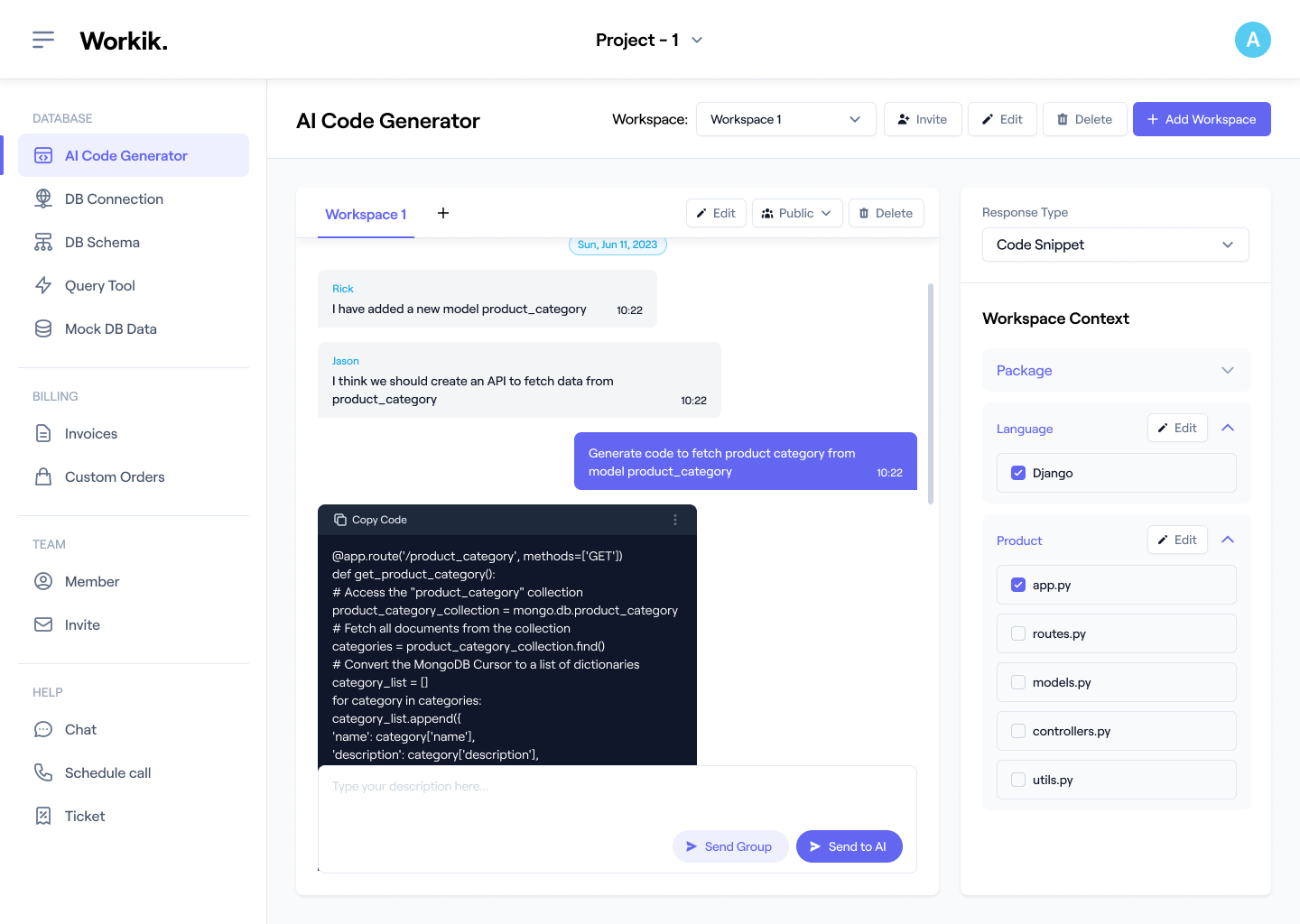

Expand
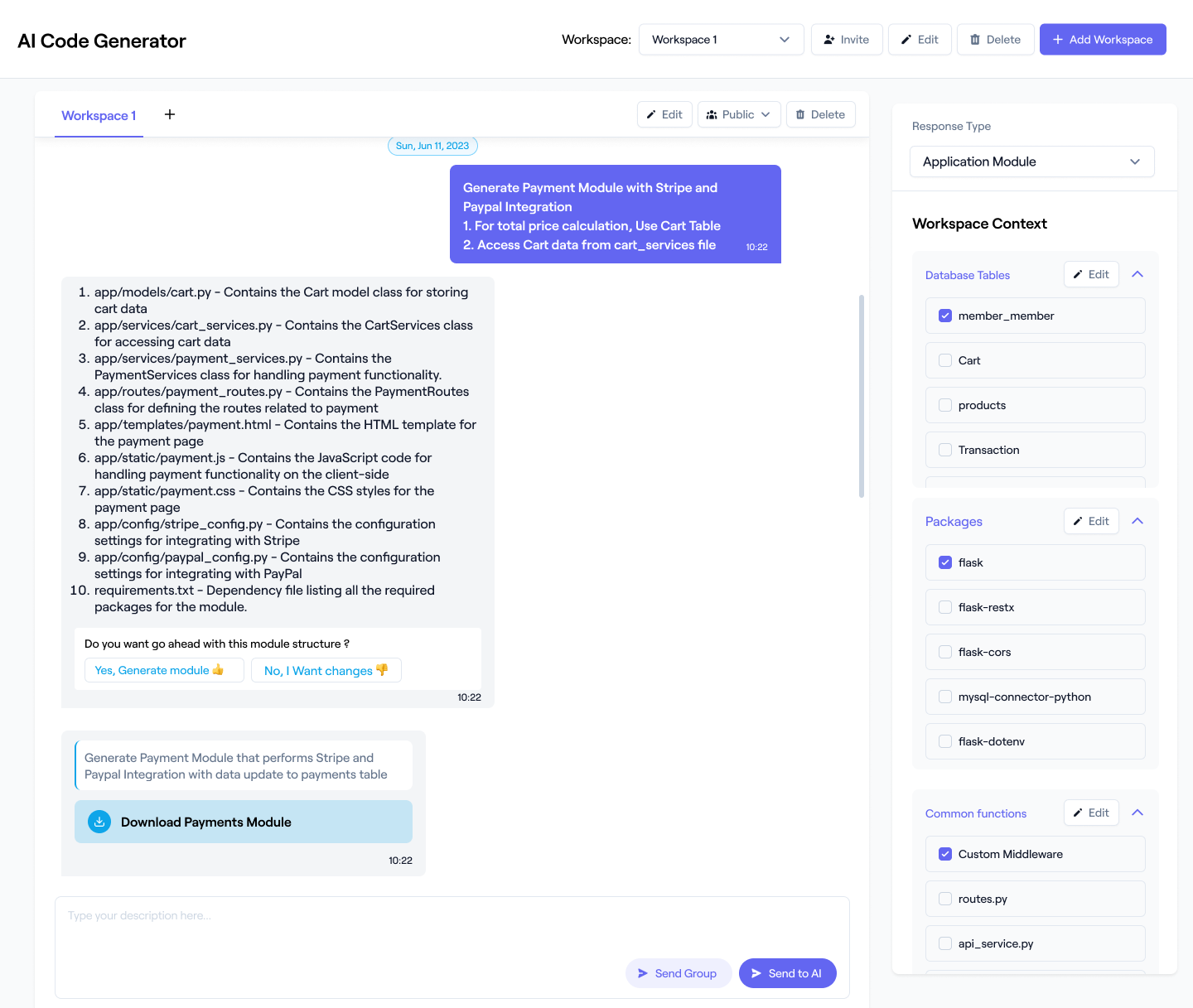

Expand
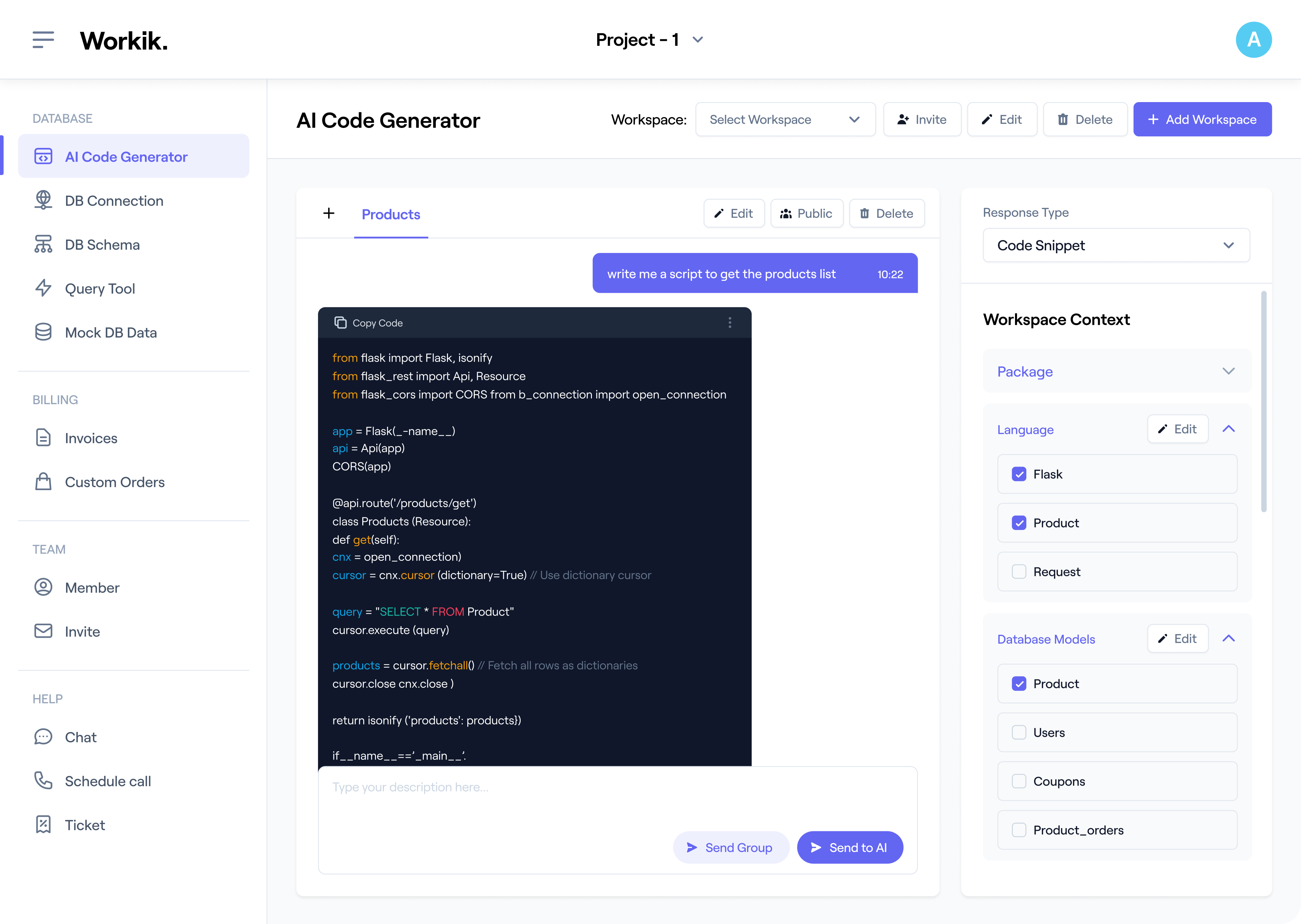

Expand
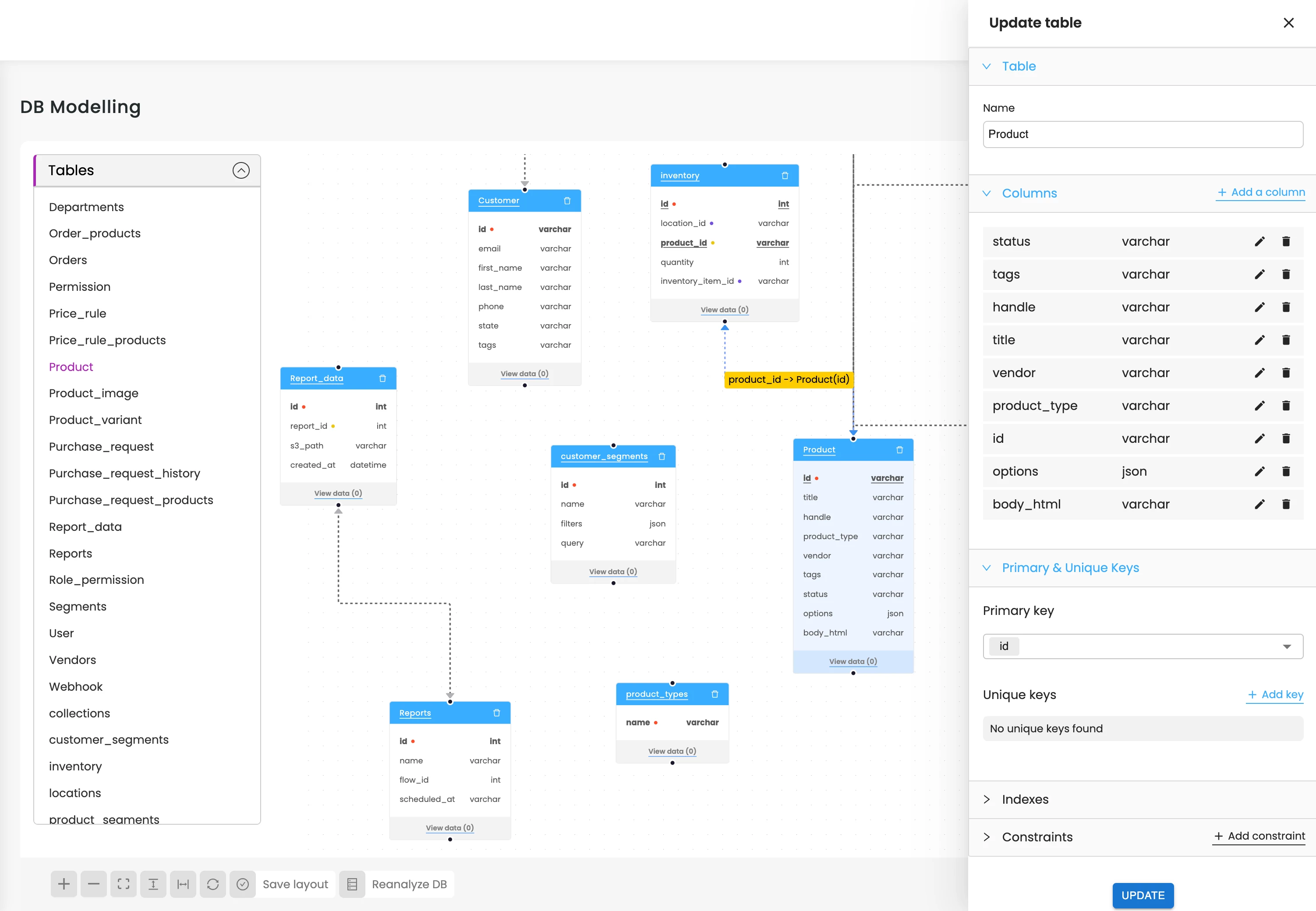

Expand
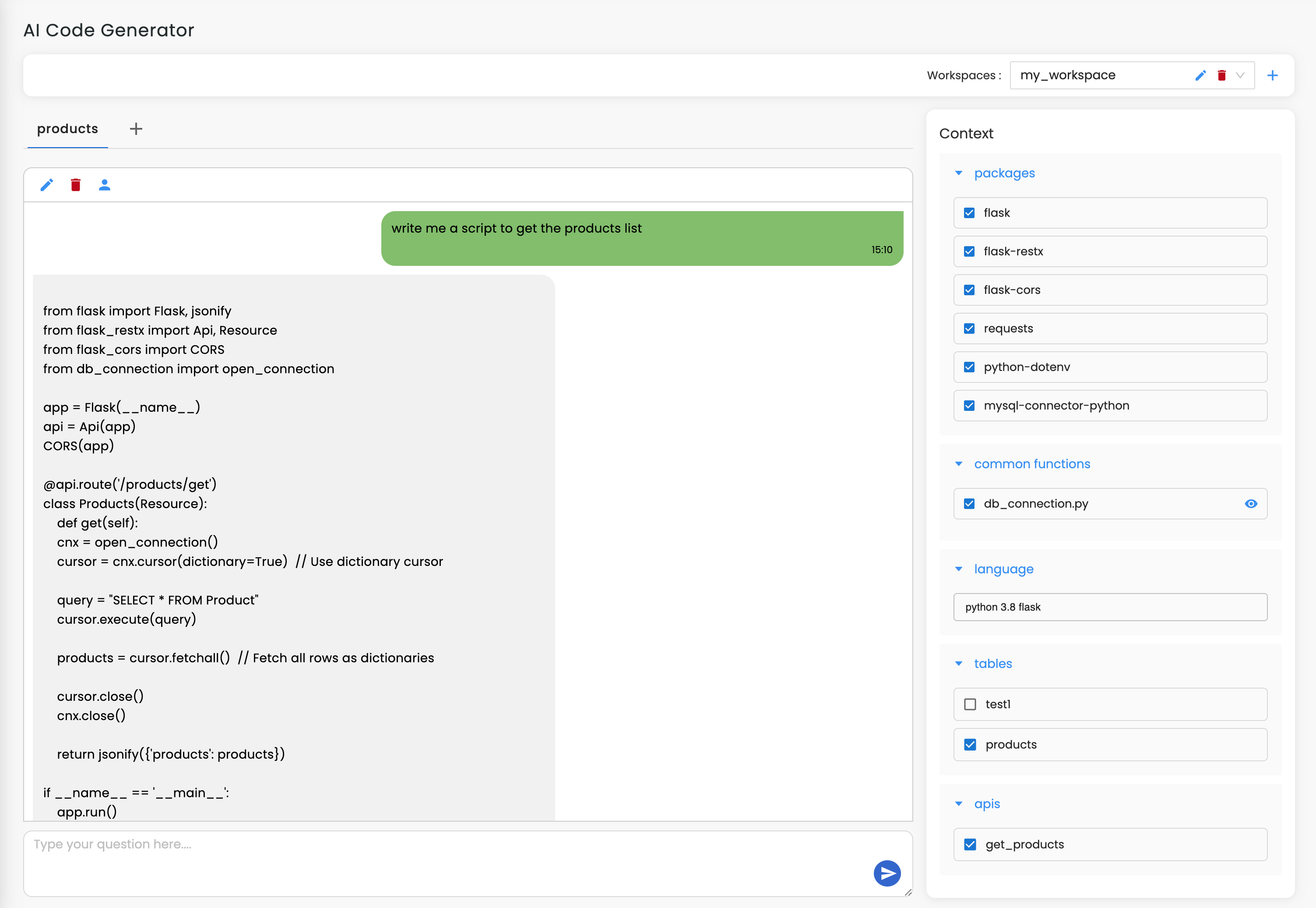

Expand


Expand


Expand


TESTIMONIALS
Real Stories, Real Results with Workik
Workik’s AI made building complex VLOOKUP and INDEX-MATCH formulas fast and easy.

Kyle Mitchell
Financial Analyst
Creating dynamic PivotTables and automating SUMIFS is now seamless, saving me hours on reports.

Jasmine Roberts
Business Analyst
Workik simplified setting up array formulas and handling IFERROR. My workflow is smoother than ever.

Francis Thompson
Operations Manager
What are some popular use cases of Workik's AI Excel Formula Generator?


Workik’s AI-powered Excel Formula Generator is perfect for a variety of use cases, including but not limited to:
* Quickly generate complex formulas like VLOOKUP, INDEX-MATCH, and IF statements.
* Automate multi-condition formulas like SUMIFS and COUNTIFS to handle large datasets efficiently.
* Simplify financial models by creating nested IF statements and calculating values using NPV and IRR.
* Streamline data validation by applying IFERROR or ISBLANK to identify and correct formula errors.
* Build dynamic array formulas like FILTER and SORT for data manipulation.
What context-setting options are available in Workik’s AI for Excel Formulas?


Workik provides flexible context-setting options to enhance your Excel formula creation by allowing users to:
* Upload Excel workbooks to define data ranges for formula generation.
* Import context from GitHub, GitLab, or Bitbucket repositories to apply formulas to specific datasets.
* Specify custom formulas like IF, SUMIF, and VLOOKUP for tailored AI support.
* Integrate external data sources for applying lookup and conditional formulas across multiple datasets.
* Include nested formula structures or dynamic arrays to automate advanced calculations within Excel sheets.
How does Workik AI enhance data analysis with formulas?


Workik AI simplifies setting up SUMIFS and COUNTIFS, making it easy to analyze large datasets with multiple conditions, helping you identify trends and patterns quickly.
Can Workik AI handle dynamic data in Excel?


Yes, Workik AI creates dynamic array formulas like FILTER and SORT, enabling real-time updates for tasks such as inventory tracking and sales analysis.
How does Workik AI improve formula performance with large datasets?


Workik AI optimizes formulas like SUMPRODUCT and COUNTIFS to ensure faster and smoother calculations, especially in large datasets, dashboards, and reports.
How does Workik AI simplify complex decision-making formulas?


Workik AI makes nested IF statements easier, automating decision-making processes like budget approvals and resource allocation that involve multiple layers of conditions.
Generate Code For Free

Excel Formulas: Question and Answer
Excel formulas are expressions used to perform calculations, manipulate data, and automate tasks within spreadsheets. They range from basic arithmetic to advanced functions like VLOOKUP, IF, and INDEX-MATCH for managing complex data.
Popular tools in Excel formulas include:
Power Query:
Cleans and prepares data for formulas.
Power Pivot:
Enables advanced calculations and data models.
VBA:
Automates tasks and custom formula functions.
Solver Add-In:
Solves optimization problems with formulas.
Analysis Toolpak:
Provides advanced statistical formulas.
Dynamic Arrays:
Automates real-time updates with FILTER and SORT.
PivotTables:
Summarizes data using formulas like SUM.
Excel Add-Ins:
Enhances formula capabilities for complex tasks.
Popular use cases for Excel formulas include but are not limited to:
Financial Modeling:
Use NPV, IRR, and IF for projections.
Data Analysis:
Analyze data with SUMIFS and COUNTIFS.
Inventory Management:
Track stock with INDEX-MATCH and IF.
Reporting:
Generate reports using PivotTables and AVERAGE.
Project Management:
Manage timelines with DATEDIF and NETWORKDAYS.
Error Handling:
Ensure accuracy with IFERROR and ISBLANK.
Professionals skilled in Excel formulas can pursue roles such as Data Analyst, Financial Analyst, Business Analyst, Excel Developer, and Project Manager. These positions involve leveraging advanced Excel formulas for data analysis, financial modeling, automation, and project management.
Workik AI enhances Excel formula tasks by:
Formula Generation:
Quickly generate VLOOKUP, IF, and INDEX-MATCH with precision.
Error Handling:
Automate IFERROR for cleaner, more accurate data.
Data Analysis:
Simplify SUMIFS and COUNTIFS for fast, insightful analysis.
Dynamic Arrays:
Use FILTER and SORT for real-time data updates.
Financial Modeling:
Create projections with NPV and IRR for accurate financial forecasts.
Automation:
Streamline reporting and formula-based workflows with AI.
Optimization and Refactoring:
Optimize and refactor complex formulas for improved performance and readability across large datasets.
Explore more on Workik
Get in touch
Don't miss any updates of our product.
© Workik Inc. 2025 All rights reserved.

